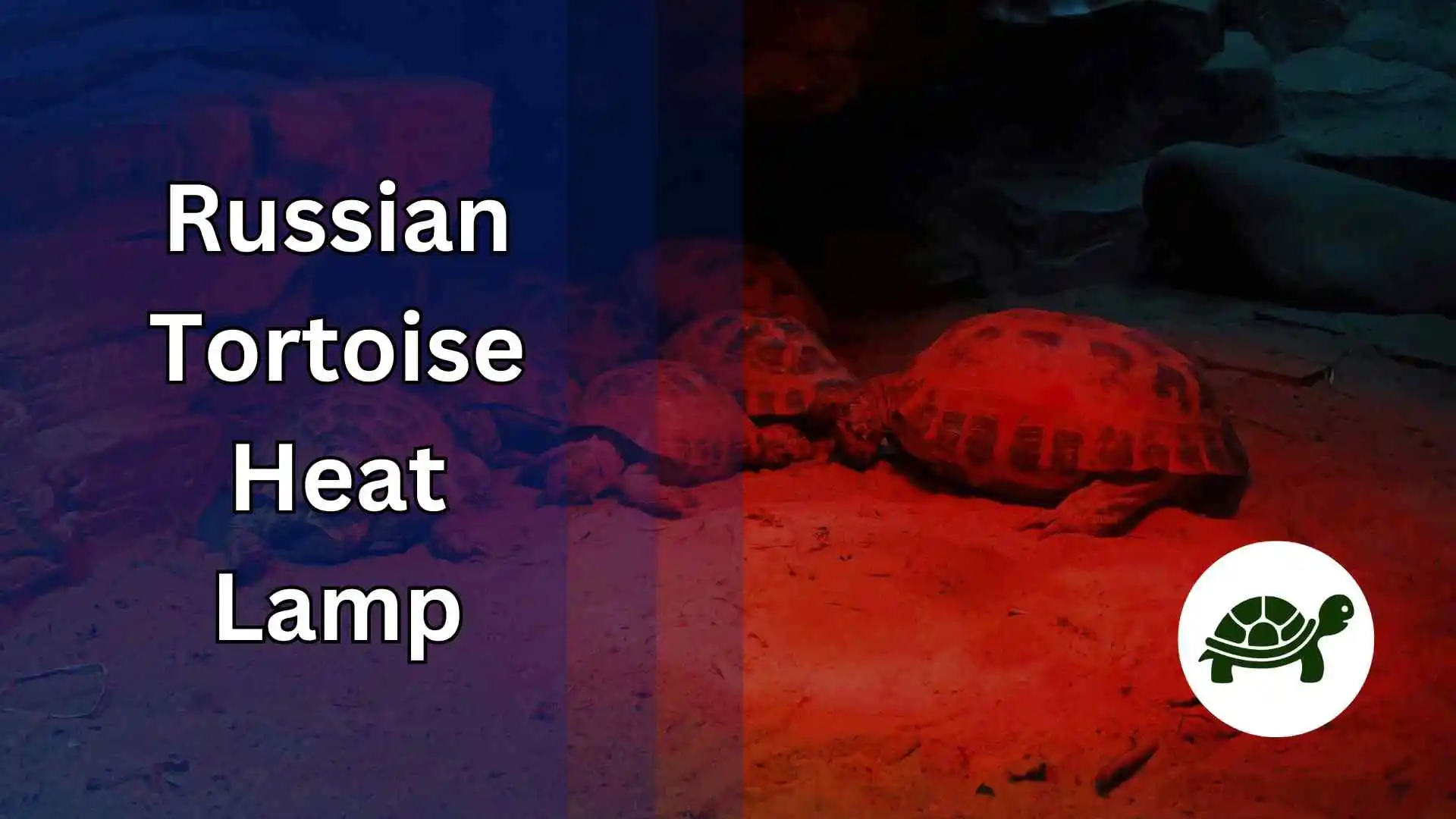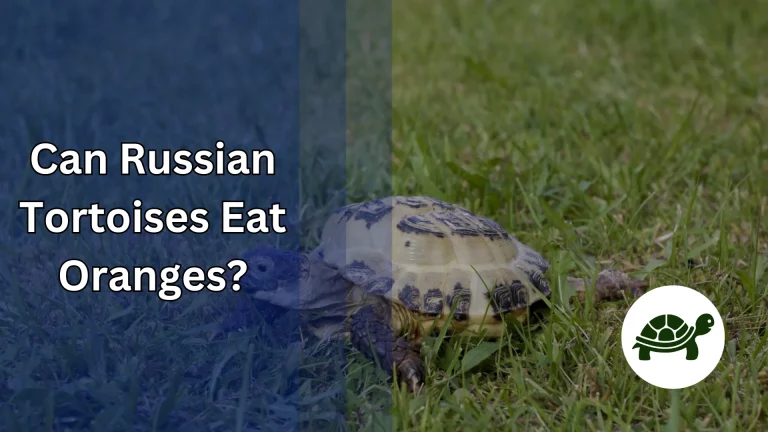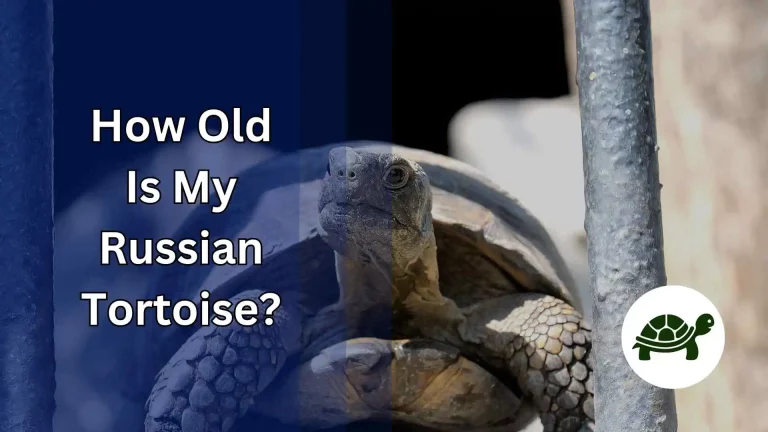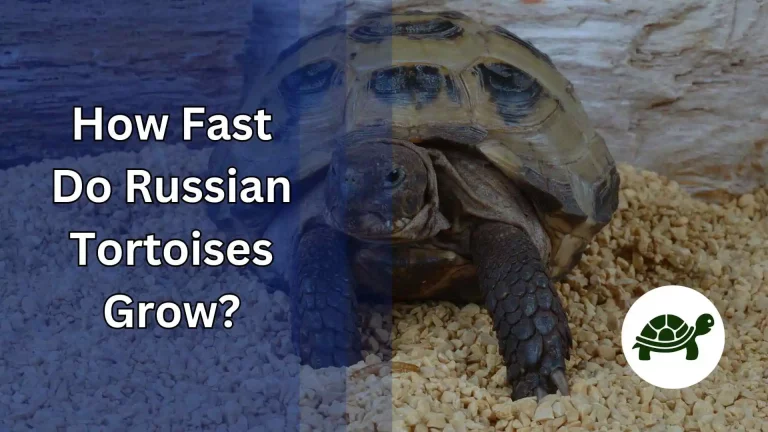Russian Tortoise Heat Lamp – All You Need To Know
In the vast and diverse landscapes of Central Asia, the Russian tortoise (also known as the Horsfield’s tortoise) has carved its niche, skillfully adapting to the challenges of its environment. Roaming the rugged terrains, these creatures have a unique way of life—basking in sunlit patches to raise their body temperature, then retreating to the cool sanctuary of their burrows when the sun becomes too intense. Their survival hinges on this delicate balance of warmth and shade.
Cold-blooded by nature, Russian tortoises cannot generate heat internally like mammals do. Instead, they are entirely dependent on their surroundings to regulate their body temperature. This characteristic makes the task of recreating their natural habitat in captivity not just a matter of comfort, but a necessity. Without the right conditions, a Russian tortoise can suffer from a myriad of health issues, ranging from poor digestion to lowered immunity.
As an enthusiast or potential caregiver of these fascinating reptiles, understanding and prioritizing their heating needs is of paramount importance. A well-positioned heat lamp can be the difference between a thriving, active tortoise and one that’s lethargic and unwell. In the following sections, we’ll delve deep into the nuances of heat lamps, ensuring that your shelled companion experiences the warmth and well-being it so rightly deserves.
Why Heat Lamps are Essential for Russian Tortoises
Russian tortoises, like all reptiles, are ectothermic creatures. This means they can’t generate internal body heat like mammals do; instead, they rely on external sources to regulate their body temperature. In the wild, these tortoises bask in the sun to soak up warmth, aiding everything from digestion to mobility.
A heat lamp does more than just mimic the sun’s warmth; it plays a pivotal role in their overall health. When a Russian tortoise is exposed to the right temperature, it ensures optimal metabolic functions, allowing them to digest food efficiently and absorb essential nutrients. Proper heating is also crucial for maintaining a strong immune system. A tortoise that’s too cold might become lethargic, refuse food, or even fall ill.
Without an appropriate heat lamp, your Russian tortoise’s enclosure might not reach the necessary temperatures, especially during colder months or in air-conditioned rooms. Remember, while they are sturdy creatures, adapting them to a captive environment requires keen attention to detail and the right equipment – and a heat lamp is an integral part of that equation.
Types of Heat Lamps Suitable for Russian Tortoises
Choosing the right heat lamp for your Russian tortoise is akin to selecting the perfect sunbathing spot for them. Each type has its unique properties and advantages tailored to different needs. Let’s explore the popular options to make an informed choice for your shelled friend.
Ceramic Heat Emitters
These are a top choice for many tortoise enthusiasts. Emitting solely heat and no light, ceramic heat emitters are perfect for maintaining nighttime temperatures without disrupting your tortoise’s natural sleep cycle. They’re also long-lasting, giving you great value over time.
Basking Bulbs
When you picture a tortoise sunning itself, it’s probably under the warm glow of a basking bulb. These lamps produce both heat and UVA rays, essential for stimulating appetite and activity in reptiles. Their bright light creates a focal point for basking, ensuring your tortoise gets its daily dose of warmth and light.
Mercury Vapor Bulbs
A favorite among many reptile owners, mercury vapor bulbs are the triple threat of the heat lamp world. They offer heat, UVA, and the all-important UVB rays, which assist in vitamin D3 synthesis and calcium absorption—vital for shell and bone health. It’s an all-in-one solution that can reduce the number of fixtures you need in the enclosure.
Infrared Bulbs
For those chilly nights, infrared bulbs come to the rescue. Emitting a gentle red glow, they provide the necessary warmth without disturbing your Russian tortoise’s sleep. It’s a great way to ensure they stay cozy even when the sun’s down.
When selecting the perfect heat lamp, consider factors like the size of your enclosure, ambient room temperature, and the specific needs of your Russian tortoise. The goal is to create a habitat as close as possible to their natural environment, ensuring they lead a healthy, comfortable life.
Positioning the Heat Lamp
Achieving the perfect climate for your Russian tortoise isn’t just about selecting the right type of heat lamp; its placement is equally crucial. Just as we seek shade during scorching summer days and sunlight during cold winters, your tortoise needs an enclosure that offers both warmth and cooler retreats.
Creating a Temperature Gradient
In the wild, Russian tortoises move between sunlit areas and shadows to regulate their body temperature. Replicate this in captivity by positioning the heat lamp on one end of the enclosure, creating a warm ‘basking’ zone. The opposite end should remain cooler, providing an area for your tortoise to escape if they feel too warm. This temperature gradient ensures they can self-regulate, promoting healthy behavior and well-being.
Setting Up the Lamp
Hang or secure the heat lamp above the basking area, ensuring it’s at a safe distance from the tortoise to prevent burns. The height will vary depending on the bulb’s wattage and the desired temperature. As a guideline, a distance of 12-18 inches from the substrate is common. However, always monitor the basking spot’s temperature and adjust as needed.
Avoiding Overheating
It’s essential to avoid overheating, which can be detrimental to your tortoise’s health. Employ a reliable thermometer to keep track of temperatures. If the basking area becomes too hot, consider using a lower wattage bulb, raising the lamp, or incorporating a lamp dimmer to regulate intensity.
Remember, while heat lamps provide warmth, they also come with responsibilities. Proper positioning can mean the difference between a thriving Russian tortoise and one that’s merely surviving. With careful attention to lamp placement and regular monitoring, you can create a haven that echoes the sun-kissed terrains of Central Asia.
Safety Precautions
As with any electrical equipment, especially those designed to generate heat, there are potential risks involved. When it comes to your Russian tortoise’s well-being, an ounce of prevention is worth a pound of cure. Here’s how to ensure that your tortoise’s heat source is both effective and safe.
1. Secure Lamp Placement
Ensure the heat lamp is firmly anchored or clamped to prevent it from falling into the enclosure. A loose or unstable lamp could pose a burn risk to your tortoise or even start a fire. Additionally, consider using a lamp guard or mesh cover to prevent your pet from coming into direct contact with the bulb.
2. Inspect for Wear and Tear
Regularly check the heat lamp, its cord, and the fixture for any signs of damage, wear, or fraying. Faulty equipment not only fails to provide the necessary heat but also poses a potential fire hazard. Replace any components that show signs of damage immediately.
3. Avoid Overloading Electrical Outlets
Connecting multiple high-wattage appliances to a single outlet can lead to overheating and electrical fires. Use a dedicated outlet for the heat lamp or consider investing in a high-quality power strip with surge protection.
4. Maintain Ambient Humidity
While Russian tortoises thrive in relatively dry environments, extremely low humidity combined with a heat source can create a fire risk. Ensure that the enclosure has some level of humidity, and place the water dish away from the direct heat of the lamp.
5. Implement an Emergency Shut-off
Consider using a thermostat with an automatic shut-off feature. This device will turn off the heat lamp if the temperature in the enclosure exceeds a preset limit, ensuring your tortoise isn’t exposed to dangerously high temperatures.
Caring for a Russian tortoise is a rewarding experience, but it’s essential to prioritize their safety. By taking these precautions, you can create a warm, comfortable, and, most importantly, safe environment for your beloved pet.
Frequently Asked Questions (FAQs) About Russian Tortoise Heat Lamps
Navigating the world of heat lamps and the specific needs of your Russian tortoise can be filled with queries. Here are answers to some of the most commonly asked questions, designed to provide clarity and peace of mind.
1. How long should the heat lamp be on each day?
For a natural day-night cycle, it’s recommended to have the heat lamp on for 10-12 hours during the day. This simulates the natural sunlight hours your tortoise would experience in the wild. An automatic timer can help maintain a consistent schedule.
2. Can I use regular light bulbs as a heat source?
While regular incandescent bulbs can produce heat, they lack the UVA and UVB emissions vital for your tortoise’s health. It’s best to invest in specialized reptile heat lamps to ensure the well-being of your pet.
3. How often should I replace my heat lamp bulb?
Even if they haven’t burned out, most heat lamp bulbs lose their efficiency over time. As a general guideline, basking bulbs should be replaced every 6-12 months, while UVB bulbs should be replaced every 6 months to ensure optimal UV output.
4. Is it okay to use a heat pad instead of a heat lamp?
While heat pads can provide warmth, they don’t offer the overhead heat and light that Russian tortoises seek for basking. Heat pads can be supplementary but shouldn’t replace overhead heat lamps entirely.
5. What’s the ideal temperature for the basking area?
For Russian tortoises, the basking area should maintain a temperature of 90-100°F (32-38°C). Always use a reliable thermometer to monitor and adjust accordingly.
The world of pet care is filled with nuances, and every detail matters when it comes to the health of your Russian tortoise. Armed with knowledge and the right tools, you can ensure your shelled companion thrives in its home away from home.
Conclusion
In the realm of pet care, understanding the nuanced needs of your Russian tortoise stands paramount. Equipping their habitat with the right heat lamp, correctly positioned and diligently monitored, mirrors the warm embrace of their native Central Asian landscapes. This isn’t just about simulating sunlight; it’s about ensuring their health, vitality, and longevity.
As you venture into the world of Russian tortoise care, remember that the choices you make today pave the path for your pet’s future well-being. By prioritizing their thermal needs and maintaining a keen eye for safety, you’re not just offering warmth—you’re gifting a habitat where they can truly thrive.







